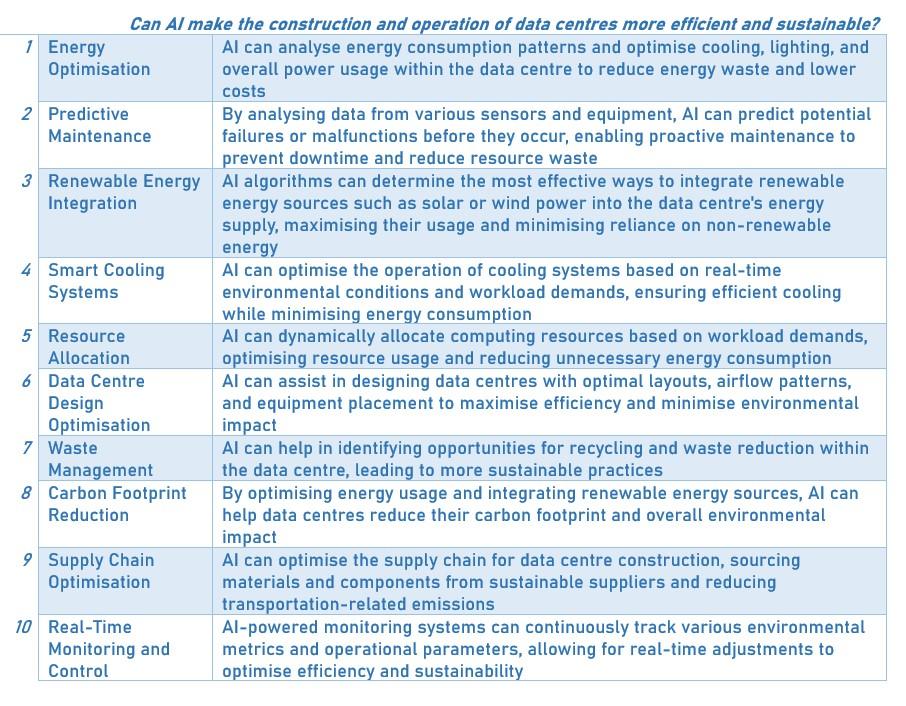How artificial intelligence is making the design and operation of data centres more efficient and sustainable

Artificial Intelligence (AI) has become a pivotal force in shaping the data centre industry, driving growth and transforming how data centres operate. Network infrastructure, automation across industry sectors and the explosion of social media have driven demand for data centres over the last two decades.
This demand continues to increase exponentially with the requirements of artificial intelligence and other smart technologies. Generative AI is driving substantial growth in data centre footprints. As companies invest heavily in AI capabilities, hyperscale data centres are expected to triple in size over the next few years.
The consensus is that we need more data centre capacity – but there is growing concern about the industry’s contribution to greenhouse gas emissions especially because of the high energy requirements of cooling systems.
Recent announcements of multi-billion dollar infrastructure projects to expand and equip hyperscale facilities with AI capability make it clear that the industry aims to create more sustainable data centres with impressive operational efficiency improvements of up to 30%.
Key themes emerging from current AI solution
An analysis of responses received from data centre operators regarding recent use cases reveal that the key capabilities of AI that are contributing to more efficient design and operation of data centres are: (i) predictive analytics, (ii) optimisation algorithms, and (iii) automation and control systems
1. Predictive Analytics
Being able to analyse vast amounts of data provides the ideal tool to predict equipment failures, energy consumption patterns, and workload demands. This allows for proactive maintenance, optimal resource allocation, and efficient planning to minimise downtime and energy waste.
2. Optimisation Algorithms
Algorithms can optimise various aspects of data centre design and operation, such as energy usage, cooling systems, resource allocation, and layout optimisation. By continuously analysing and adjusting parameters based on real-time data, algorithms can help to maximise efficiency and reduce operational costs.
3. Automation and Control Systems
AI-driven automation systems can streamline data centre operations by autonomously managing tasks such as workload distribution, equipment optimisation, and environmental controls. This reduces the need for manual intervention, improves response times, and ensures consistent performance while minimising human error.
What do these capabilities look like in practice?
These themes continue to emerge when we look at the most common use cases that data centre operators are employing in their facilities.

Current solutions range between AI-based robots that are automating functions and optimising efficiency within data centres, and optimisation algorithms that leverage predictive analytics. It is clear that companies expect AI capabilities to help them achieve ambitious targets relating to operational efficiency and decarbonisation.
What next for AI and data centre transformation?
Forecasts for 2024 indicate that AI capability and sustainability concerns will continue to dominate innovation for the coming year, with generative-AI aggressively driving demand.
Three potential areas for AI technology to further transform the industry are:
(i) Increase in colocation facilities that are already AI-enabled for flexibility, efficiency and sustainability
(ii) Improved technology and efficiencies for energy storage and
(iii) Increased focus on cybersecurity and information protection from cloud and colocation providers



